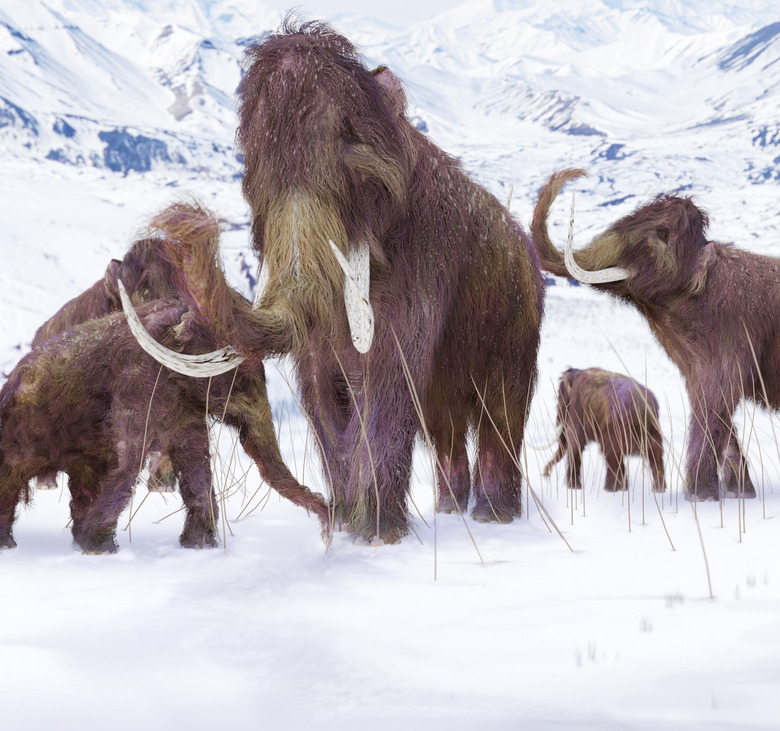Facts About The Wooly Mammoth
The woolly mammoth (Mammuthus primigenius) died out about 10,000 years ago, although a population of dwarf mammoths survived until 1700 B.C. on the Arctic Wrangel Island. They first appear in the fossil record some four million years ago in Africa. Woolly mammoths were one of the mammoth family, now all extinct, and were closely related to the extinct mastodon and the surviving African and Asian elephants. Woolly mammoths were found across North America and Eurasia in tundra and grassland habitats.
Description
Description
Woolly mammoths were up to 12 high feet at the shoulder and weighed as much as 12 tons. They were covered in dense fur up to a metre long with a fine undercoat of wool. Mammoths had small ears, curved tusks up to 16 feet long and a high, domed head. They are believed to have lived in family herds and to migrate between food sources throughout the year.
History
History
Woolly mammoths appear in prehistoric cave paintings in France, Spain and Britain and also feature in tribal legends in North America and Siberia. They were present in North America when the continent was first inhabited by man. In 1796 French scientist Georges Cuvier was the first western scientist to study mammoth bones and recognize them as the remains of an extinct species closely related to the elephants. Mammoth ivory is still collected in Siberia as a substitute for elephant ivory.
Habitat
Habitat
During the ice ages, large areas of northern Eurasia and North America were covered in ice sheets. Woolly mammoths lived on the flat tundra and grasslands south of the ice sheets. These areas are believed to have been covered in grass and mosses as well as shrubs. Mammoths are believed to have had to consume up to 700 pounds of vegetation a day to survive.
Extinction
Extinction
Recent evidence suggests that woolly mammoths survived in Europe and Siberia until 8000 B.C., with a small population surviving until 3750 B.C. on St. Paul's Island in Alaska and a dwarf race alive on Wrangel Island until 1700 B.C. Their extinction is believed to have been caused by a combination of the disappearance of its habitat at the end of the last ice age and human hunting.
Frozen Mammoths
Frozen Mammoths
Several complete woolly mammoth carcasses have been discovered preserved in the permafrost of Siberia. The most famous example was Dima, a 40,000-year-old baby mammoth discovered in 1977 in northeastern Siberia. In 2007 a female calf, nicknamed Lyuba, was discovered in Russia. There has been much speculation about the possibility of cloning the mammoth but since freezing damages cells and DNA, this remains impossible with current technology.
Cite This Article
MLA
Bramwell, Alex. "Facts About The Wooly Mammoth" sciencing.com, https://www.sciencing.com/facts-about-the-wooly-mammoth-12327329/. 22 November 2019.
APA
Bramwell, Alex. (2019, November 22). Facts About The Wooly Mammoth. sciencing.com. Retrieved from https://www.sciencing.com/facts-about-the-wooly-mammoth-12327329/
Chicago
Bramwell, Alex. Facts About The Wooly Mammoth last modified March 24, 2022. https://www.sciencing.com/facts-about-the-wooly-mammoth-12327329/
